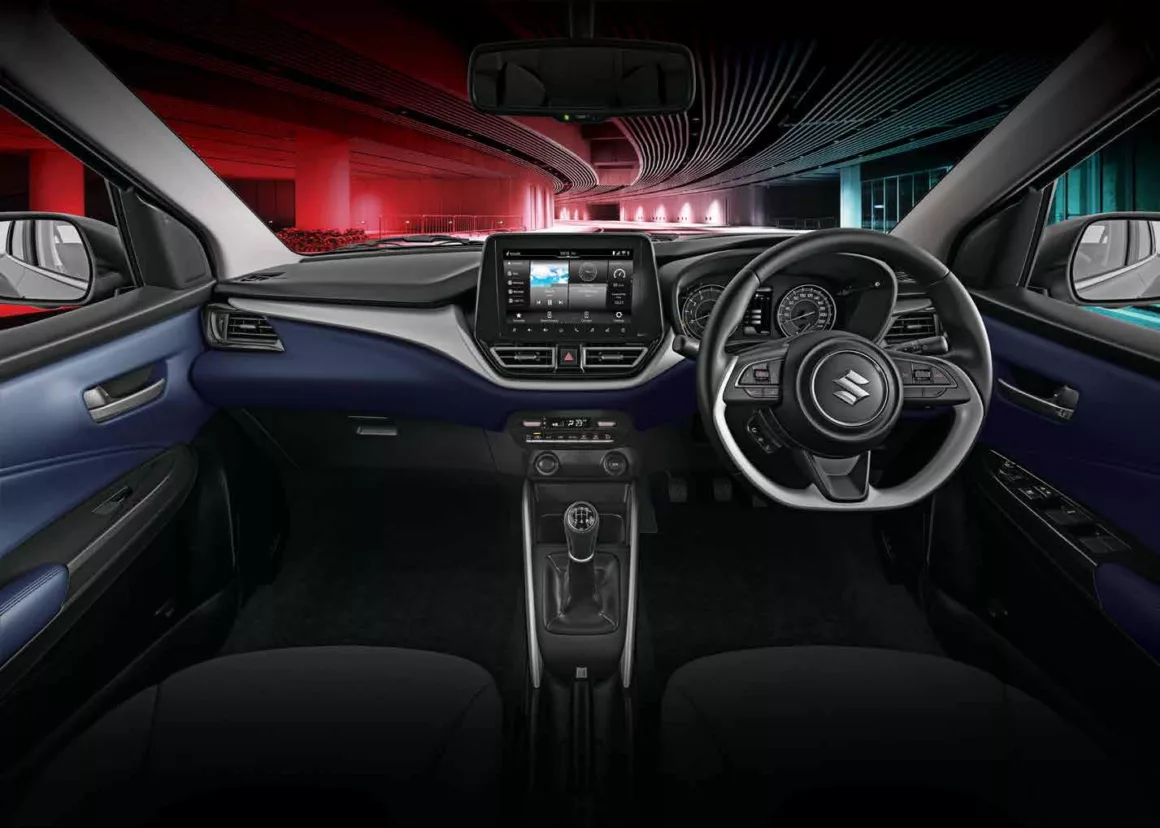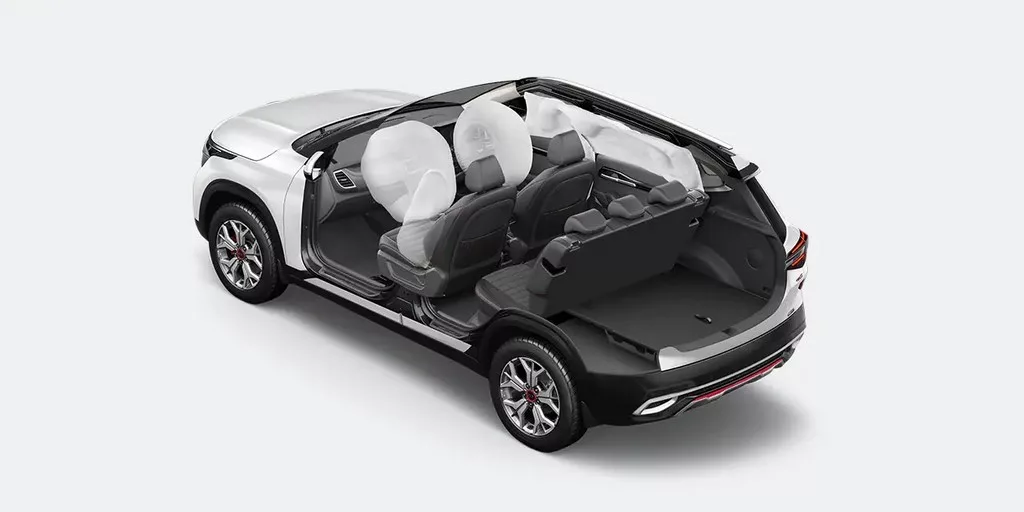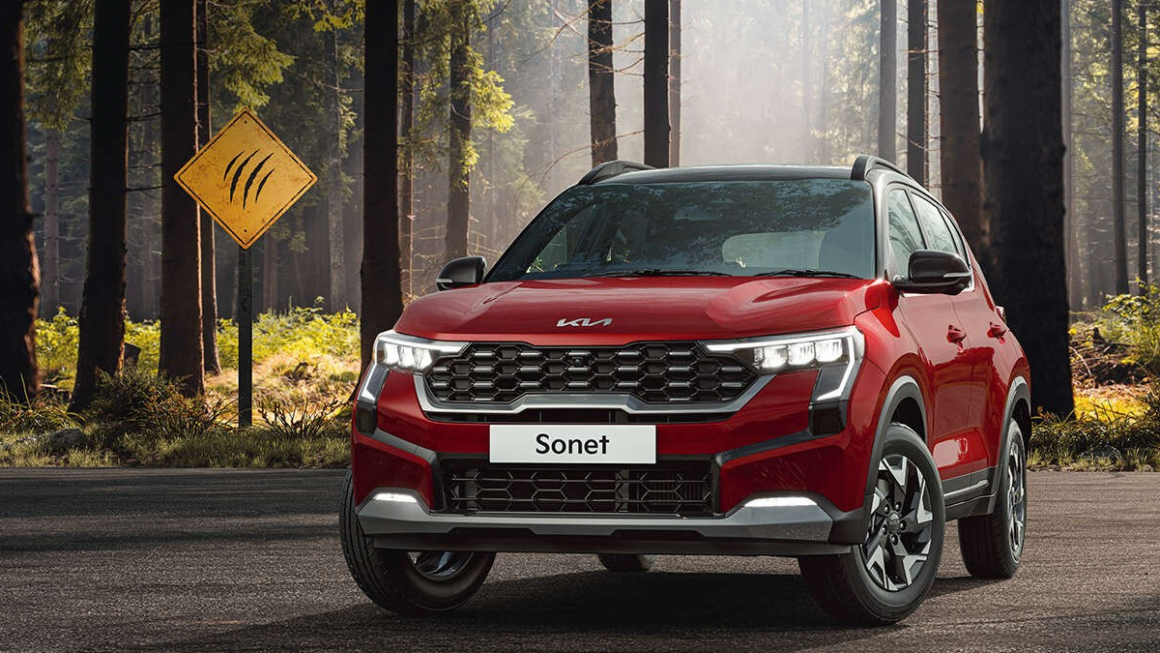Hatchbacks are the go-to options for people looking to buy an affordable new car or a good grocery-getter for the city. The Maruti Baleno has been one of the most successful cars in recent years for being an affordable and practical hatchback from a trusted brand.
However, compact SUVs have started selling for hatchback-rivalling prices. Take the Kia Sonet, for example. It starts at Rs. 7.99 lakh ex-showroom, which is practically hatchback territory. The recent facelift further enhances its appeal with a more stylish design and competitive pricing, making it an even more compelling choice.
Both cars offer plenty of value for their money and come in very tempting packages. Let’s find out which one comes out on top when we compare all the nooks and crannies of the two cars.
Kia Sonet vs Maruti Baleno: Dimensions
Parameters | Kia Sonet | Maruti Baleno |
Length (mm) | 3995 mm | 3990 mm |
Width (mm) | 1790 mm | 1745 mm |
Height (mm) | 1642 mm | 1500 mm |
Wheelbase (mm) | 2500 mm | 2520 mm |
Boot Space (L) | 392 litres | 318 litres |
Ground Clearance (mm) | 205 mm | 170 mm |

The difference between the two here is crystal clear since one is a hatchback, and the other is a compact SUV. But focus on the term compact here. The Sonet is bigger than the Baleno, but not by as much as one would think. The two cars come very close to each other in the length and wheelbase departments because a compact SUV does not exceed the 4-metre length threshold. As a result, you would get a similar space for your legs in both cars.

It is the height and ground clearance where you’ll start seeing some differences. The Sonet is higher both from the ground and in terms of overall height, obviously. The extra 142 mm height is a prominent feature for those wanting all the headroom they can get. Also, the ground clearance can be a deciding factor on whether the car can move beyond paved roads or not. The Sonet also gets 74 litres of extra boot space for luggage. However, you should always check the boot space volume distribution firsthand to see if it’s adequate for you because sometimes, even a higher boot space won’t be as good as one thinks if the layout is not optimal enough to hold plenty of luggage. The 45 mm width difference between the Sonet and Baleno is not as big as night and day, but it will come in handy when there are three people in the rear seat for a long time.
Comparing the dimensions between the two yields the Sonet as the clear winner here, for obvious reasons. The purpose of an SUV is to add an extra degree of practicality to your transportation, and the Sonet fulfils that to a certain extent. While the Baleno is sub-par to the Sonet in the size department, it certainly holds its own when compared to a hatchback.
Kia Sonet vs Maruti Baleno: Engine & Transmission
Parameters | Kia Sonet | Maruti Baleno |
Engine Options | 1.2-litre Petrol 1.0-litre Turbo Petrol 1.5-litre CRDi Diesel | 1.2-litre Petrol 1.2-litre CNG |
Transmission Options | 5-speed Manual 6-speed iMT 7-speed DCT 6-speed AT | 5-speed Manual 5-speed AMT |
Power | 83 - 120 PS | 77 - 89 PS |
Torque (Nm) | 115 - 250 Nm | 98 - 113 Nm |
Mileage | Petrol - 18.4 km/l Diesel - 19 km/l | 22.35 to 22.94 km/l (Petrol) 30.61 km/kg (CNG) |
Fortunately, both cars offer multiple fuel choices. Petrol is the common denominator here. The other fuel option for the Baleno is a CNG kit attached to the petrol motor, and for the Sonet, it’s a diesel engine.
The Baleno’s main powertrain is a 1.2-litre petrol with variable valve timing. It’s naturally aspirated and makes 89 PS and 113 NM of torque. The petrol motor comes paired with either a 5-speed manual or a 5-speed AMT transmission. The CNG option uses the same engine, so you can run it in either the CNG or petrol mode whenever you like. In CNG mode, the engine makes 77 PS and 98 NM of torque.
The Kia Sonet’s petrol engine lineup includes a 1.2-litre naturally aspirated MPFi engine that makes 83 PS and 115 NM of torque. You can only have it with the 5-speed manual gearbox. The second petrol engine option is a turbocharged 1.0-litre motor. It uses a gasoline direct injection system, making 120 PS and 172 NM of torque. Kia pairs this engine with a 6-speed iMT (clutchless manual) or 7-speed DCT transmission option. Finally, the diesel offered with the Sonet is a 1.5-litre naturally aspirated CRDi that makes 116 PS and 250 NM of torque. Much like the petrol engine, the diesel engine also gets the 5-speed manual and the 6-speed iMT, but it gets the 6-speed AT for the automatic variant instead.
A car’s mileage is one of its most important figures for car buyers, and you’ll see that neither vehicle disappoints in this field. The Kia Sonet’s ARAI mileage ranges from 18.2 to 24.1 km/l, depending on the engine and transmission options. The Maruti Baleno, on the other hand, is a much more conservative option. The naturally aspirated engine has a claimed ARAI mileage of 22.35 to 22.94 km/l for the petrol variant. The CNG, as expected, is even more efficient and gives 30.61 km/kg.
Here, the choice between power and efficiency becomes the deciding factor between the two. The Maruti Baleno and Sonet can match each other in the petrol variant depending on the transmission chosen and the driving style, of course. The Baleno offers more kilometres per kg in its CNG variant, whereas the Kia Sonet brings more smiles per mile with its turbocharged 120 PS engine.
Kia Sonet vs Maruti Baleno: Features and Comfort
Features | Kia Sonet | Maruti Baleno |
Infotainment System | 10.25-inch HD infotainment system with Android Auto and Apple CarPlay | 9-inch Touchscreen Infotainment System with Android Auto and Apple CarPlay |
Music System | 7 speakers | 4 speakers |
Climate Control | Yes | Yes |
Ventilated Seats | Yes (Front) | No |
Adjustable Steering | Tilt | Tilt & Telescopic |
Drive Modes | Yes | No |
Instrument Cluster | Digital | Hybrid (Analog + Digital) |
Sunroof | Yes | No |
Adjustable Seats (Manual or Electric) | Manual | Manual |
Rear AC Vents | Yes | Yes |
60:40 Rear Seat Split | Yes | Yes |
Cruise Control | Yes | Yes |
You can expect any modern car in the market today to have all the bells and whistles in the features and comfort department. Here, both the Kia Sonet and Maruti Suzuki Baleno have plenty of features to entertain. Nonetheless, there are some differences between the two in terms of interior and cockpit layout.

A modern layout, soft-touch materials, and a good finish make the Kia Sonet’s cabin a good place to be in. The Sonet’s features list is quite long. It contains amenities such as a digital instrument cluster, an infotainment screen with Android Auto & Apple CarPlay, rear AC vents, cruise control, and multiple driving modes. Like its sibling, the Seltos, the Sonet also has ventilated seats. Some premium features like electrically adjustable seats and telescopic steering wheel adjustment managed to escape the Sonet. Yet, for the price it sells, the list of comfort and convenience features is quite generous.

Maruti Baleno is a relatively economical hatchback, with affordability being one of its major selling points. This also means that the Baleno misses out on some premium features like ventilated seats, sunroof, or driving modes. That being said, the Baleno still manages to pack quite a lot of tech goodies like cruise control, rear AC vents, automatic climate control, and connected car features. However, the overall cabin design and layout do not match the Kia Sonet’s fashionable cockpit.
When it comes to modern features and comfort, the Kia Sonet takes the crown. As a contemporary SUV, the Sonet boasts a sleek and stylish interior filled with all the latest bells and whistles. In contrast, the Maruti Baleno’s interior layout feels dated, and its feature list also pales in comparison to the Sonet’s abundance.
Kia Sonet vs Maruti Baleno: Safety Features
Features | Kia Sonet | Maruti Baleno |
GNCAP Safety Ratings | Not Tested | Not Tested |
Airbags | 6 | 2 (Standard) 6 (Max) |
ABS with EBD | Yes | Yes |
ESC | Yes | Yes |
Traction Control | Yes | No |
Automatic Headlamps | Yes | Yes |
Rain-sensing Wipers | No | No |
Hill Hold Assist | Yes | Yes |
Hill Descent Control | No | No |
Rear Sensors | Yes | Yes |
Rear Parking Camera | Yes (360° Camera) | Yes (360° Camera) |
ISOFIX Child Seat Anchor Points | Yes | Yes |
ADAS | Yes | No |
Safety is a major factor for many people when buying a new car. You should know that neither the Kia Sonet nor the Maruti Baleno are exactly known for their safety ratings. You should check out cars like the Tata Altroz, Nexon, and the Mahindra XUV300 if you want a 5-star safety-rated car.

Nevertheless, the Kia Sonet nabs a moderate 3-star safety rating in the Bharat NCAP crash test. The Sonet also has driver-assist features like ABS, EBD, automatic headlamps, hill hold assist, stability control, and traction control. The 2024 Kia Sonet also gets ADAS. However, this one is missing hill descent control and rain-sensing wipers.
The Maruti Baleno also comes with driver-assisting acronyms like ABS, EBD, and ESC. But it also lacks hill descent control like the Sonet. Moreover, it lacks ADAS, traction control and Rain-sensing Wipers as well.
The Kia Sonet’s 3-star rating may not be the best in the segment, but it outperforms the Baleno, offering greater peace of mind. The Kia Sonet, with its numerous safety tech and ADAS, wins in the safety department between the two.
Kia Sonet vs Maruti Baleno: Prices & Variants
Variants | Kia Sonet | Maruti Baleno |
Base | Rs. 7.99 - Rs. 9.79 Lakh | Rs. 6.61 Lakh |
Mid | Rs. 8.79 - Rs. 11.39 Lakh | Rs. 7.45 - Rs. 8.35 Lakh |
Upper-Mid | Rs. 11.49 - Rs. 12.99 Lakh | Rs. 8.38 - Rs. 9.28 Lakh |
Top | Rs. 13.39 - Rs. 15.69 Lakh | Rs. 9.33 - Rs. 9.88 Lakh |

The Kia Sonet’s base model starts from Rs. 7.99 lakh. The base model HTE comes with a few basic features like a 4.2″ instrument cluster, rear AC vents, charging sockets, and power windows at the front. The HTK Plus starting from Rs. 9.90 lakh, and the HTX Plus starting from Rs. 11.49 lakh, offer a lot of value for their money’s worth. If you don’t mind an electrically adjustable driver’s seat, alloy wheels, ADAS, or a sunroof, the HTK Plus covers most of the basic and some luxury needs of a new car in an affordable package. Additionally, the Kia Sonet comes with a suite of safety features such as 6 airbags, ABS, EBD, TPMS, auto door lock, etc., as standard. The top-most model sells for more than Rs. 13.39 lakh, and it comes with premium features like ventilated seats, power-adjustable seats, crystal-cut alloy wheels, an electric sunroof, and a lot more.

The Maruti Baleno divides its features between 4 trims, the Sigma, Delta, Zeta, and the Alpha. To no one’s surprise, the best value-for-money variant for the Baleno is the upper-mid Zeta. With the base model lacking some necessary features and the top-variant costing more than Rs. 9 lakh, the upper-mid Baleno Zeta brings plenty of the good parts from both worlds. Compared to lower variants, the Zeta includes some essential features like side & curtain airbags, a rear parking camera, wireless connectivity for the infotainment system, an armrest for the driver, and connected car features. Moreover, the Zeta manages to keep the ex-showroom price under the Rs. 9 lakh mark, making it an affordable choice.
Here, you will probably find the Maruti Baleno to be a better choice in terms of value for money unless you require the extra size of the Sonet. The Sonet, despite being a tempting choice in its segment, asks for a lot more money than the Baleno in their corresponding variants. As far as we’re concerned with getting a new car with plenty of features for an affordable price, the Maruti Baleno comes out on top.
Kia Sonet vs Maruti Baleno: Summary
Both the Sonet and the Baleno come from different segments but share the common goal of providing an unmatched ownership experience for their respective prices, regardless of the variant or fuel type selected.
The Kia Sonet continues to gain the love of Indians through its impressive list of accomplishments. The Sonet possesses a striking design both inside and out and features some premium luxury features in its class. It provides plenty of power to satisfy many people’s need for speed and also adds an extensive list of safety features on board.
The Baleno offers tremendous fuel economy and practicality at an affordable price. It’s not the best in the market in terms of safety, but it gets the job done in the city. Maruti’s sales & service outreach is well known already, and the Baleno brings home all the necessary elements of a new car at such a low price.
At the end of the day, your decision depends on whether you prioritize practicality, fuel efficiency and sales/ service of the Suzuki, in which case the Baleno may be the better option, or if you want to add a more advanced compact SUV with a range of features to your garage, in which case the Kia Sonet might be the way to go.



